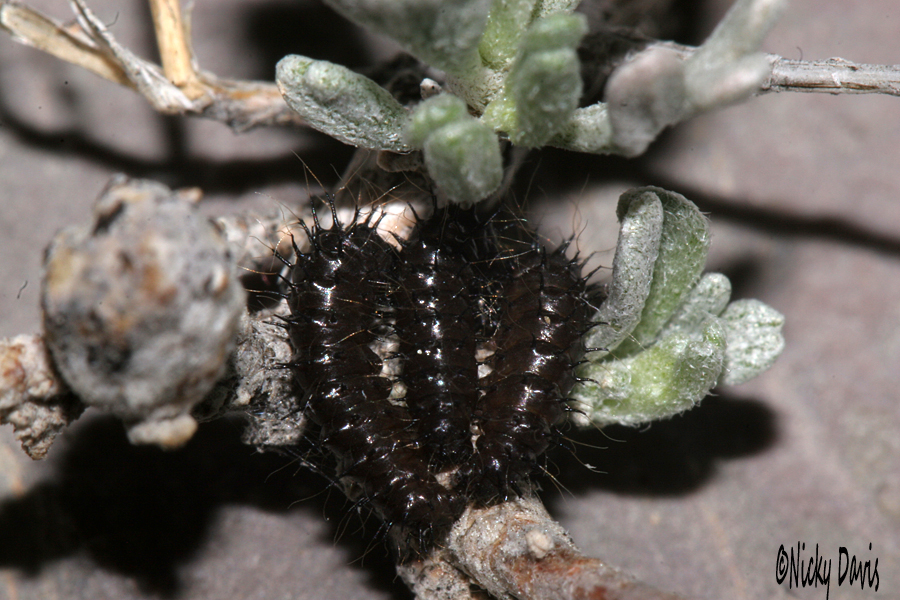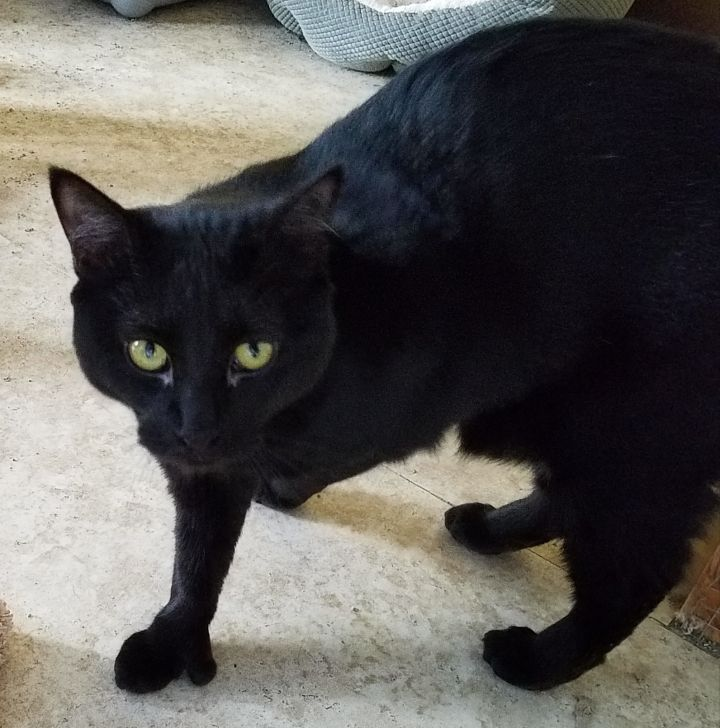Hemileuca hera, the Sagebrush Sheep Moth, is one Hemileuca that looks at first glance as if it could belong in the group called "giant silk moths." Though not as gigantic as the Actias or even the Citheronia group, H. hera is larger than the average moth or butterfly, with a wingspan between 7 and 9 cm (2.6 to 3.75 inches).
This species has been known and discussed for a long time, but little is known about it. It is so poorly documented online that my 2013 study of what was online about the Hemileucas, at that time, rates around 100 on search engines. Now that's bad. These species posts ought by rights to rate about 100 on search engines, though they are only reviews of existing literature and contain no original field research whatsoever. All I'm trying to do here is put the available information about these moths into one place. That 2013 overview ought to have been displaced by a few hundred that have more to say about hera, by now.
Now THIS is a Blogspot that ought to rate high on any search for Hemileuca hera. This blogger found a litter of about twenty caterpillars outdoors, brought them in, reared them, and at the time of writing had obtained one adult moth--in September, having started in spring/ (Hera often pupate through the first year, so the other nineteen caterpillars might have been alive at the time of posting.) I can't pick just one of her photos and fair use wouldn't extend to copying the lot, so check out the photo essay at:
The genus name Hemileuca means "half white," and accurately describes some of the wings of moths in this genus. H. hera is often almost all white. Wings can be white with only black markings, or white with black markings and a few yellow spots. Bodies are furry and often show yellow or orange. To my eyes, this is a pretty moth.
Photo by California Academy of Sciences.
The species name hera commemorates an ancient goddess. While Pagan goddesses were often listed merely as members of male gods' families, identified with very limited forces of nature like wells or trees, or celebrated as abstract ideals like Justice or Community, Hera was one of the more primitive ones who could be seen as an ancient tribe's attempt to imagine a Supreme Being. Like Athena, Demeter, Diana, and a handful of other goddesses, she was specifically worshipped and claimed as a patron by the feminists of those days. She was worshipped independently until tribal wars caused her to be "married," according to legend forcibly married, to Zeus. Though this "marriage" caused more of ancient Greece to acclaim Hera as "Queen of Heaven," legends suggest that her worshippers thought too many of her powers and attributes had been transferred to a philandering, inferior, merely male notion of God. The tradition of naming the much-hated Hemileucas after goddesses seems misogynist to me, but in the case of hera it might be seen as making sense; this is a large, showy moth. Early Anglo-Americans had a superstitious belief the moths were departed souls; big showy moths were the souls of distinguished but unsaved persons, and hera might have been seen as the ghost of some ancient queen who, in her days of pride and power, let people worship her as God.
The English name fits this species better. H. hera is found in the arid western part of North America, often in dry flat fields where sagebrush and sheep thrive. Its food plants are in the sagebrush, lupine, and wild buckwheat families. It is one of the few animals that will eat Big Sagebrush.
H. hera is found in Washington state and British Columbia, in Saskatchewan, Montana, Wyoming, Colorado, Utah, Arizona, New Mexico, and California, but according to the state government it is not found in Idaho. They assert this as if they were proud of having extirpated the species. Marcata is found in Oregon and California. Hera has been found recently in Nebraska and the Dakotas, where its appearance has caused concern.
Entomologists have debated for a long time whether to classify Hemileuca hera, Hemileuca marcata, and Hemileuca magnifica as closely related species or subspecies of one species. "Lumpers" agree that hera is the most widespread and should be considered the basic or "nominate" subspecies. A web search will find material for marcata and magnifica as species and as Hemileuca hera marcata and Hemileuca hera magnifica. One source on which this post draws identifies Hemileuca hera marcata as a subspecies and Hemileuca magnifica as a closely related, confusible species. At all stages of their lives these moths look very much alike but they show some slight differences, which may be produced by diet alone. Hera and magnifica caterpillars usually (not always) have blackish brown or brownish black skin through all instars, showing colored stripes and bristles as they grow bigger; marcata caterpillars have pale, almost white skin on the undersides. Caterpillars and adults of magnifica can be even bigger than hera with caterpillars often four inches long. Magnifica's life cycle can extend over two years or more, spending the first winter as unhatched eggs and the second winter as pupae, and sometimes pupating through two winters and the summer in between.
Adult marcata shows even less color than hera. Magnifica are distinguished by their size. The difficulty is that either hybrid or intergrade individuals are often found, and can be hard to classify. As with other closely linked types of Hemileuca, these moths force us to reconsider the meaning of "species." Sblings who ate the same diet at the same time may look different. Individuals who look alike and are attracted to each other may be unable to produce viable offspring. Turning at last to DNA studies to work out once and for all which of these moths are genuinely distinct species and which are variant forms of the same species, Tuskes, Collins, et al. have concluded that only six of the sixty-some named species in this genus may show enough consistent DNA difference to be called distinct species.
Photo of "Hemileuca hera magnifica" from Huffmantaxidermy.com. Note the egg-loaded female's size and weight relative to a big sagebrush blossom.
Female moths in this species usually start "calling" prospective mates with their scent after their wings have matured.
Photo from WildUtah.us. Their photo essay shows this moth climbing out of the leaf litter under a brush pile, climbing to the top, and assuming the "calling" position.
What I find most annoying about moths as a whole class of animals is that, if you are touched by or even downwind from a moth in heat--and most of them are in heat, most of the time--you will then be followed and pestered by moths of the opposite sex, wanting to meet the one who left a trace of its scent on you. You can't even smell why a half-dozen male moths are parading around, e.g., your elbow, wanting to know where the female moth's gone. You didn't even see her. It's like constantly getting calls for an ex-housemate, only instead of ringing your phone moths tickle you. I'm sure it's a great consolation to this young man that heras are too big to fly right up a human nose. (Never pick your nose while standing downwind from a lonely moth.)
Photo from Damoosie at Inaturalist.
Photo from Butterfliesandmoths.org.
Like other Hemileucas these moths usually seem to mate face to face if they can, and stay together, smelling and touching each other, before and after the reproductive act. (Sometimes, INaturalist documents, they become more exuberant. Photos exist of males hanging or flying upside down during the consummation of moth love.) However, if they live to mate again, both males and female will look for a new partner, both preferring one who has not mated before. Moths release the greatest number of fertile egg and sperm cells the first time they mate, which is often the only time, though males and females will mate a second or third time if they can When a couple finally tear themselves apart, the male flits off in search of another female, and the female flits off in search of a good place to lay her eggs.
It takes the female moth half an hour to an hour to lay her eggs, placing them in a cluster on a host plant. After laying she rests for a while. She does not eat or drink. She has only one thing to do--find another male, if possible, and lay more eggs.
Hemileuca moths' prospects for second and even third mating seem dismal due to the moths' strong preference for virgin brides or bridegrooms.
Like other Hemileucas they fly in the daytime, but are seldom seen. They can live up to a week but many, due to stress and predation, live only a day or two as moths.
Hemileuca eggs are laid in clusters, and for the first three instars (changes of skins) the caterpillars live in clusters. Instincts tell the they are safest when they can feel a siblings bristles against their own on either side. As a group, although cold-blooded, they enjoy some insulation during hot afternoons and chilly nights. If threatened the whole litter will thrash about to sting as much of a predator as possible. While some Hemileucas seem to sting passively, and hera can do this too, simply curling up with the bristles out and letting the bristles sting anything that gets in their way, observers say hera also positively move to sting anyone they perceive as likely to disturb them.
Photo from NebraskaLepidoptera.com.
With the fourth skin comes a change in social orientation. The caterpillars are now big enough that each one needs a food plant of its own, and vulnerable to fungus infections that spread from caterpillar to caterpillar. Now they want space as much as they wanted togetherness last week. Their bristles give the immunity to one another's venom, since bristles touch only other bristles. Nevertheless they will maintain a good healthy distance from one another until they become bristleless, cuddly adults.
Hera caterpillars typically have bristles that form rosettes, with all the tips at about the same distance from the body, in two rows on the back, and branched barbs on the head, tail, and sides. A scientist who volunteered to test this found that contact with rosette-shaped barbs hurt more than contact with branch-shaped ones, because rosette-shaped barbs bring more stings and more venom into contact with the skin.
Detail shot of the bristles by Rjlittlefield.
The best cure for stingtingworms' stings is--duh!--prevention: don't touch the caterpillar. Since this advice, though good, is not useful if you are walking under a tree when a fat, clumsy caterpillar falls off an upper branch, curls up with its bristles out as it falls, and drops down your neck, the recommended first aid is to run a patch of duct tape over the sting skin, sticky side down, to pick up any stinging hairs stuck to the skin. Then dab, don't scrub, or immerse if feasible, in cold water. Vernom will gradually break down in the body in a few hours or days. Anaphylactic shock is not common, but possible.
However, hera's habits make this species less likely to drop down anyone's neck than tree-feeding species are, and the caterpillars also tend to stop growing while they are just a little over two inches long. They are an exception to the rule that the adult moth's or butterfly's wingspan approximately equals the length of the caterpillar. Like all Hemileucas they are very unpleasant to have around, but, unlike some Hemileucas, they do give everyone else a fair chance to avoid them.
Photo from ProjectNoah.org. Their photo essay documents that this dark individual showed up more clearly when photographed in the shade than it did when photographed in the sunshine.
As in most Hemileuca species, hatchling caterpillars are black. In later changes of skins, stripes along the sides appear, bristles show color, and the bristles on the back form rosettes. Individual variations are observed. Some caterpillars have tan rather than sable skin.
Hemileuca moths usually have one generation per year. Hera moths fly in late summer, depending on location. Eggs laid at any time between July and September hatch early next spring. Caterpillars grow through six instars before pupation. Weather is thought to be a primary factor, but not the only factor, determining the length of the moth's life cycle, since some siblings mature in one year while others do not.
Some caterpillars, however, go through a seventh instar, pupate through the winter, and eclose
They have a few predators, mostly tachinid flies and tiny wasps that lay eggs on the caterpillars' thick skins. A caterpillar's skin is made of chitin and, though thinner than our fingernails, seems to be about equally insensitive. Fly and wasp eggs hatch into microscopic maggots, which bore into the caterpillars and parasitize their insides for a few days, then gnaw their way out and pupate in little cocoons tucked among the caterpillars' bristles. Parsitized caterpillars usually survive for a few days but are unable to reproduce, so the parasites control populations of caterpillars that are otherwise a great nuisance. The best way to control populations of these caterpillars is to make sure nobody sprays poisons that might harm the wasps and flies.
There are records of larger predators eating part or all of a Hemileuca caterpillar. Collins and Tuskes saw a robin eat a baby hera and apparently live. A Canadian researcher saw a stinkbug, whose proboscis was slightly longer than the caterpillar's bristles, puncture a Hemileuca grotei caterpillar and drain its body liquids. A web search pulled up two photos of stinkbugs attacking hera caterpillars, too. However, though the moths are apparently less toxic than their black, white, and yellow or orange color scheme seems to advertise, the caterpillars are venomous and at no stage of its life is this species very appealing to predators of its own size or larger. Tiny insect predators are humans' main allies in keeping Hemileuca populations low.
Some spiders can eat the moths, and Argiope aurantia is capable of secreting an odor that may lure a scent-smitten male moth into the spider's web. This has been better studied in connection with some other Hemileucas bu anything that thins populations of this species is worth knowing about. Any of the Hemileuca, Automeris, or Saturnia caterpillars nicknamed stingingworms can tempt people to try to spray the pests away. That approach never works; poison sprays always kill more predators than pests, so in the next generation you have more pests relative to fewer predators, so the company looks forward to selling you even more spray and a formerly minor nuisance becomes a serious nuisance. If you want to reduce your chance of exposure to stingingworm venom, never spray poison; let natural predators maintain balance in the environment generally. (If you actually find a stingingworm, of course, finding a heavy stick and doing what comes naturally is unlikely to alter the balance of species.)





















